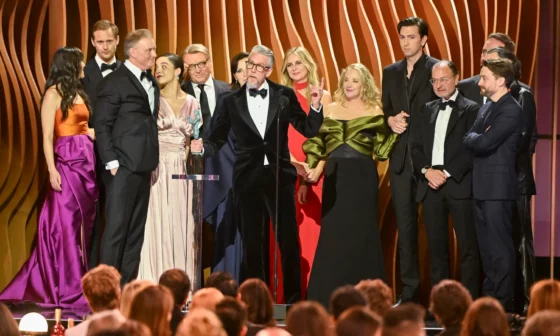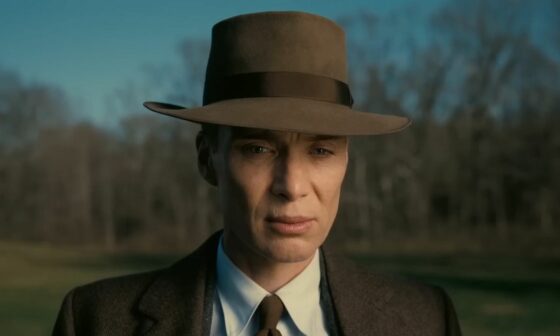
Play It Safe is a 12-minute short film focusing on Jonathan, a Black man amidst a sea of white people at his middle-class London drama school. Jonathan is told by his drama teacher to never play it safe when acting, and the film itself lives by her mantra when it comes to its themes, as it’s a short that highlights the casual racial stereotypes that are still prevalent even within supposedly liberal spaces.
Jonathan is asked by his two white classmates to play a part in the play they’ve written. It’s implied that he’s already turned down the part once, but their teacher insists that it’s a good role, and coaxes him into accepting. Yet when director Mitch Kalisa focuses on the script, we see the character Jonathan has been asked to play is a stereotypical “hoodlum”.
The film previously made it clear than Jonathan’s two classmates are friendly to him – they earlier enthusiastically asked him to come to a concert with them, which they have already paid for, while also potentially setting him up with a girl from Instagram – but what this plot point highlights is the casual, conditioned racism still prevalent even among those who think themselves above prejudice.
The classmates are well-intentioned, but they can’t see that the character they’ve written for Jonathan is a racist stereotype, likely bred from consuming media over the years where Black characters have also been written by white people without proper representational input.
Not only does this script highlight why representation is important – a wider collection of writers from different walks of life will create varying types of characters, and not just the same stereotypes we have seen time and time again – but it also shows why understanding how harmful casual racism can be is important. Ijeoma Oluo talks about this in her book So You Want To Talk About Race:
“When we acknowledge racism as a part of a system, instead of being limited to our ability to win over racists, we can instead focus on how our actions interact with systemic racism.
No, the problem isn’t just that a white person may think black people are lazy and that hurts people’s feelings, it’s that the belief that black people are lazy reinforces and is reinforced by a general dialogue that believes the same, and uses that belief to justify not hiring black people for jobs, denying black people housing, and discriminating against black people in schools”.
She goes on to add that when stereotypes like this are upheld, and not challenged, they have broader social implications:
“The assumption that a black father isn’t in the picture reinforces an image of irresponsible black men that keeps them from being hired for jobs. The assumption that a Latinx woman doesn’t speak good English keeps her from a promotion. The assumption that a child of color’s parents wouldn’t have a college degree encourages guidance counselors to set lower goals for that child.
The assumption that black people are “angry” prevents black people from being taken seriously when airing legitimate grievances. These microaggressions help hold the system of White Supremacy together, because if we didn’t have all these little ways to separate and dehumanize people, we’d empathize with them more fully, and then we’d have to really care about the system that is crushing them”.
The tricky question the film then asks of Jonathan is, what do you do? Does he go along with the racist caricature and leave the stereotype unquestioned, which prevents a potentially awkward situation but only encourages the casual racism? Or does he challenge it and risk being seen as “difficult,” and risk alienating to the rest of his class?
The second half of the film sees Jonathan address this conditioned racism in an interesting way, during a scene where part of the class pick a card with the name of an animal on it out of a hat, and are asked to embody that animal in front of everyone for a few minutes.
Jonathan decides to go ahead with what his teacher suggested to the group earlier, to use the whole space and not “play it safe,” which Kalisa uses to demonstrate the prejudices still deeply ingrained in so many parts of society.
Shot with impressive visual language and addressing important issues, Play It Safe is the kind of short film that not only should be seen by as many people as possible, but discussed as well. It has morsels of Sebastián Silva‘s Tyrel and Julius Onah‘s excellent Luce within it, but manages to stand on its own.
If Kalisa can make something this interesting and thought-provoking in just 12 minutes, it would be fascinating to see what he can do within a feature length. Hopefully he gets the chance.
The film stars Jonathan Ajayi, and is written, edited and directed by Kalisa. It’s currently streaming online at SXSW Festival until Wednesday, March 31.
#Peace.Love.PlayItSafe








